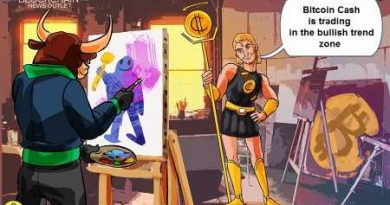Why YouTuber TechLead is ‘selling all my Ethereum’
Patrick Shyu, a former tech lead at both Google and Facebook, as well as a popular YouTuber with over 1 million subscribers, recently announced that he is selling all of his Ethereum.
Why? He says it’s because Ethereum is an over-engineered project that does not scale, and that Vitalik Buterin has recently taken some marketing missteps that could damage the project long-term.
“There’s so much hype around Ethereum, but I think few people actually understand how ridiculous it truly is,” said Shyu. “So I wanted to make this quick video exposing Ethereum as the over-engineered project it truly is because as an ex-google, ex-Facebook tech lead, I can actually understand some of this stuff.”
Where Ethereum goes wrong
Admittedly, Ethereum has a respectable mission, but the way it tried to accomplish that mission made it bound for disaster. What could have been a system that infinitely scaled from launch day, is now a system that requires complex engineering and updates that nobody really understands for it to scale.
Shyu says this is the main problem that he has with Ethereum, and in his recent video, “SELLING ALL MY ETHEREUM – My Problem With Ethereum (as a millionaire),” Shyu takes a deep dive into a recent blog post by Vitalik Buterin titled, “The Limits to Blockchain Scalability.”
“Vitalik goes on a rampage creating this blog post, elegantly titled, “The Limits to Blockchain Scalability,” [it’s really just] a wall of text, technobabble, techno-jargon in which you can’t understand a single thing that he’s talking about here. He talks about database internal storage having structures like a tree and that it’s in RAM and you have to do multiple disk lookups, and then he goes on to talk about sharding and how Ethereum is using quadratic sharding and he maybe can even look into cubic sharding or exponential sharding. He goes on about shard chains, beacon layers, coordination layers, and all of this is meant to bedazzle and bewonder you into submission,” said Shyu. “This is the core of the problem that I have with Vitalik Buterin, not to mention, by the way, this whole essay is pretty much an admission of defeat that ethereum is not scalable.”
What Shyu says about techno-babble and techno-jargon that the masses cannot understand is nothing new. It reminds me of when I sat in on an Ethereum 2.0 presentation in 2019. At that point in time, ETH 2.0 had allegedly been in development for several months if not at least a year at the point, but regardless, all the presenter could do was talk about scalability theories, they did not even have a demo that they could show, just a PowerPoint with graphs, elaborate pictures, and techno-speak that the masses could not identify with or even have an idea of whether that kind of solution works or not.
This is a problem that has plagued Ethereum scalability for a long time—it is so complex, that only a select few engineers can really understand what Vitalik is trying to build while the rest of the world has to trust that his idea will eventually be created—which is highly questionable—and that it will work.
Ethereum 2.0 has been in production for several years now, yet, we still have not seen any tangible evidence of it.
Vitalik Buterin vs. Elon Musk
Shyu goes on to talk about how Elon Musk saw Vitalik’s blog post and responded by saying that Vitalik fears Dogecoin and the upgrades that Musk has proposed for it.
Shyu saw this as a sign that Elon Musk is opposed to Ethereum and is more interested in making Doge an Ethereum competitor that is superior to the Ethereum network or ETH 2.0—which he sees as a big problem. From a marketing perspective, it would have been advantageous to have Elon Musk on their team, but now, Musk has made it very clear that he has no interest in Ethereum’s future.
“We needed this guy on our team,” says Shyu, “And to make matters worse, the other Ethereum co-founder left the project to go build Cardano, so now we have all these little sub-factions of people working against each other trying to make their coin the best instead of trying to create a single unified global currency that is going to change the face of money.”
Many people share Patrick Shyu’s views on Ethereum. It isn’t until you actually try to build on the protocol that you realize that the Ethereum blockchain’s functionality is lackluster and that for it to be fixed would require upgrades that are difficult to create and implement. As Shyu says in his video, the path forward for Ethereum is full of obstacles, and the chance that Ethereum can overcome these obstacles does not look great.
Follow CoinGeek’s Crypto Crime Cartel series, which delves into the stream of groups—from BitMEX to Binance, Bitcoin.com, Blockstream, ShapeShift, Coinbase, Ripple and
Ethereum—who have co-opted the digital asset revolution and turned the industry into a minefield for naïve (and even experienced) players in the market.
Source: Read Full Article



